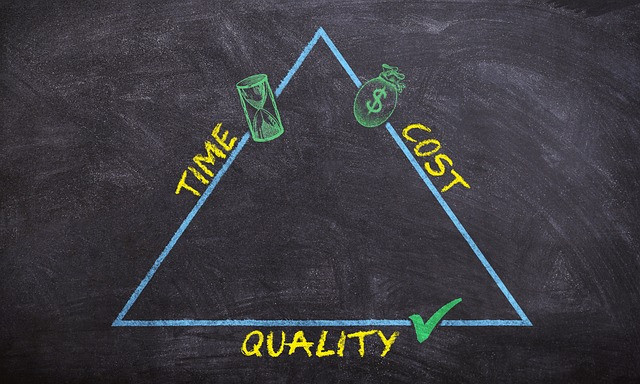Looking to build a sustainable income stream? A subscription based business model might be exactly what you need. As someone who has helped launch and scale multiple subscription businesses over the past decade, I can tell you that subscription revenue is transforming the modern business landscape. According to McKinsey, the subscription e-commerce market has grown by more than 100% annually over the past five years, with the average consumer now spending $273 per month on subscription services.
I’ve witnessed firsthand how subscription models can create predictable monthly income while building valuable long-term customer relationships. Whether you’re considering a subscription box service, digital membership platform, or software-as-a-service offering, I’ll guide you through proven strategies to build a profitable subscription business that generates reliable monthly revenue.
Understanding the Subscription Economy
The subscription economy has revolutionized how businesses operate and how consumers access products and services. Research from Zuora shows that subscription businesses grow revenues about 5 times faster than S&P 500 company revenues. This shift towards recurring revenue models isn’t just a trend – it’s a fundamental change in consumer behavior.
The beauty of a subscription-based business model lies in its predictability. Instead of constantly chasing new one-time sales, you’re building a base of loyal customers who provide steady monthly income. This predictable revenue allows for better business planning and investment in growth.
Key benefits include:
- Predictable recurring revenue
- Higher customer lifetime value
- Stronger customer relationships
- Better cash flow management
- Opportunities for upselling and cross-selling
According to Gartner, by 2026, 75% of organizations selling directly to consumers will offer subscription services. This massive shift presents an unprecedented opportunity for entrepreneurs to build sustainable businesses.
Choosing Your Subscription Model Type
When developing your subscription-based business model, like Netflix, selecting the right type is crucial for success. Based on my experience, there are three primary subscription models to consider:
- Curation and Discovery
- Subscription boxes (beauty products, food, clothing)
- Content curation (newsletters, media)
- Expert selections (wine clubs, book clubs)
- Access and Membership
- Digital content platforms
- Online communities
- Premium service access
- Replenishment and Convenience
- Essential products auto-delivery
- Regular service scheduling
- Consumable items replacement
Each model has its unique advantages and challenges. For instance, curation models often see higher engagement but require constant innovation, while replenishment models typically have lower churn but face more competition.
Building Your Value Proposition
The foundation of any successful subscription based business model is a compelling value proposition. Your offering must solve a recurring problem or fulfill an ongoing need that justifies regular payment.
Consider these elements:
- Time savings
- Cost savings compared to one-time purchases
- Exclusive access or content
- Personalization and customization
- Community belonging
- Convenience and automation
According to PwC research, 43% of subscribers appreciate the convenience factor, while 36% value the cost savings of subscription services. Your value proposition should communicate these benefits to potential subscribers.
Pricing Strategy and Customer Acquisition
Developing an effective pricing strategy is crucial for subscription business success. The key is finding the sweet spot between value delivery and profitability. Consider offering multiple pricing tiers:
- Basic tier: Entry-level access
- Premium tier: Enhanced features/services
- Enterprise tier: Full-service solution
Customer acquisition costs (CAC) must be carefully managed. Industry benchmarks suggest your customer lifetime value (LTV) should be at least 3 times your CAC for a sustainable business model.
FAQ Section
Q: How much capital do I need to start a subscription business?
A: Initial capital requirements vary widely, from $5,000 for digital subscriptions to $50,000+ for physical product subscriptions. Focus on minimizing overhead costs initially.
Q: What’s a good target profit margin for subscription businesses?
A: Healthy subscription businesses typically aim for 30-40% gross margins, though digital subscriptions can achieve 70%+ margins.
Q: How do I reduce subscriber churn?
A: Focus on consistent value delivery, regular engagement, excellent customer service, and gathering/acting on feedback.
Q: What are the most successful subscription niches?
A: Currently, digital services, health/wellness, education, and lifestyle products show strong growth potential.
Q: How long until a subscription business becomes profitable?
A: Most subscription businesses reach profitability within 12-18 months, assuming effective customer acquisition and retention strategies.
Conclusion
As an entrepreneur who’s been immersed in the subscription economy for years, I can confidently say that a subscription-based business model offers unprecedented opportunities for building sustainable income. The key to success lies in choosing the right model, delivering consistent value, and maintaining strong customer relationships.
Remember, successful subscription businesses aren’t built overnight – they require patience, persistence, and constant optimization. But with the right approach, you can build a profitable subscription business that generates reliable monthly income for years to come.
I’d love to hear about your experiences with subscription businesses. Have you tried building one? What challenges did you face? Share your thoughts in the comments below, and let’s learn from each other’s experiences.




